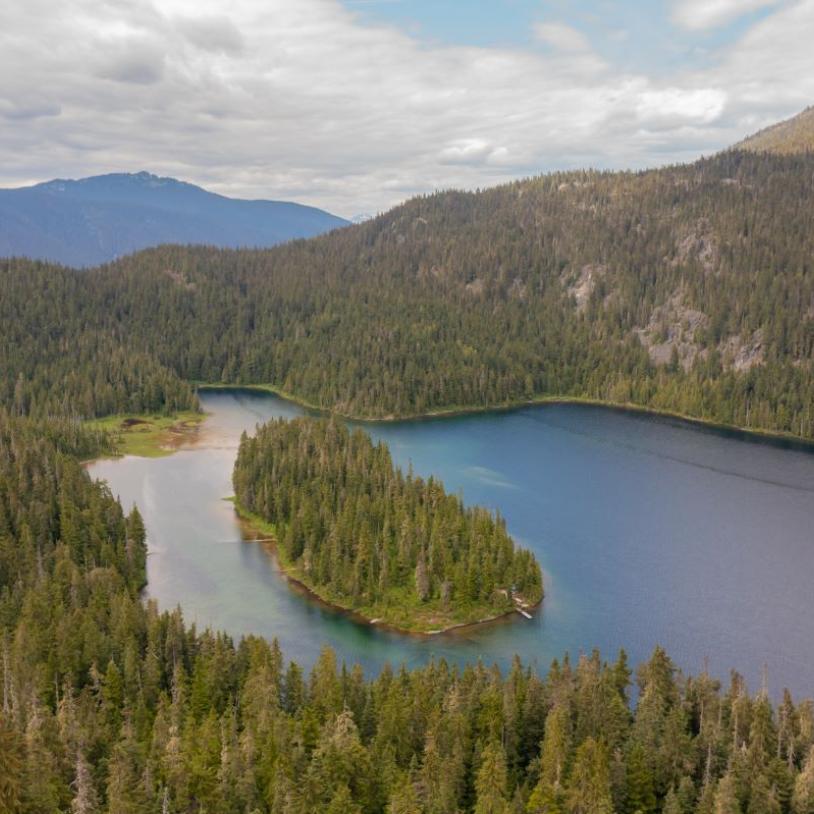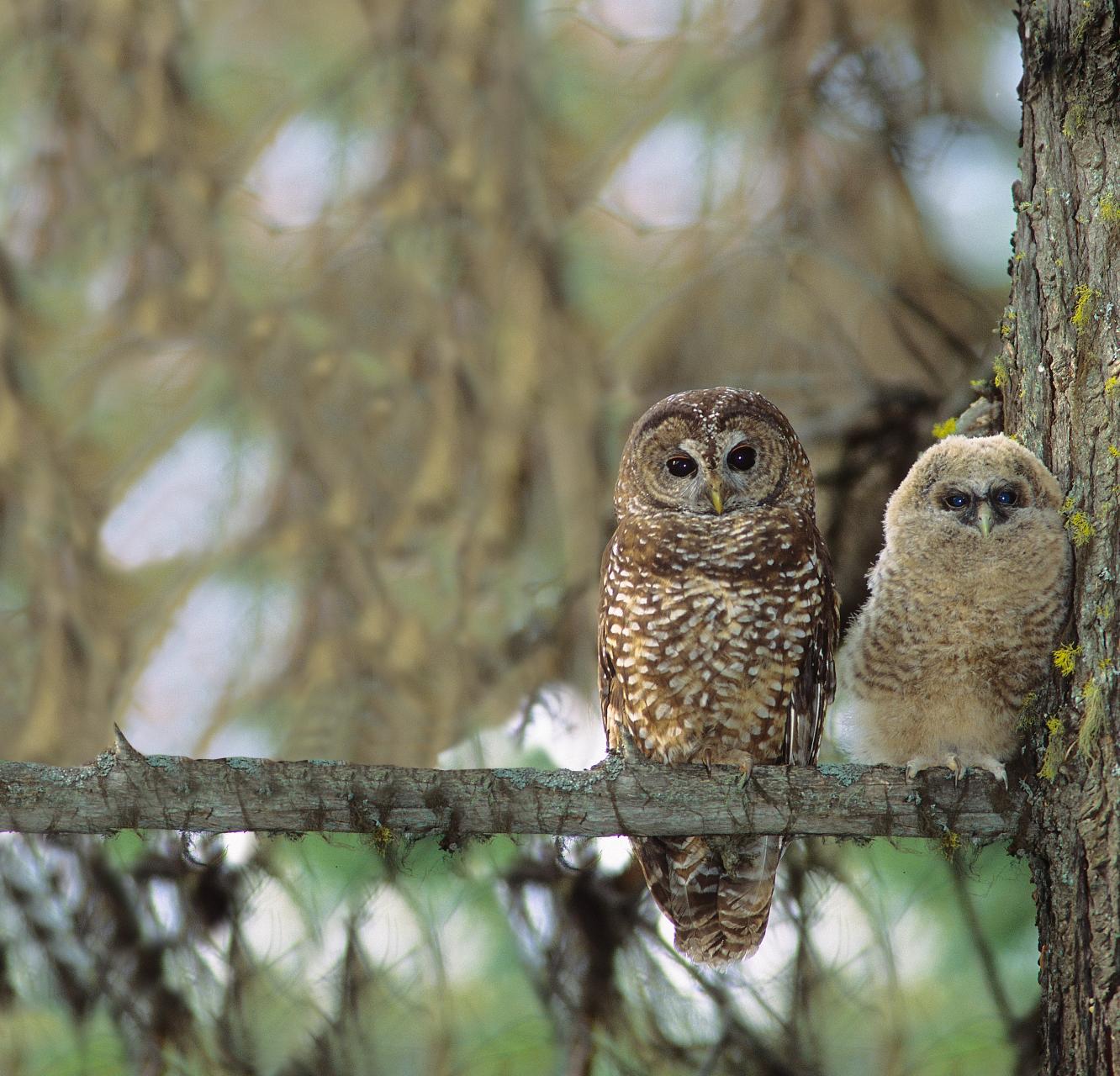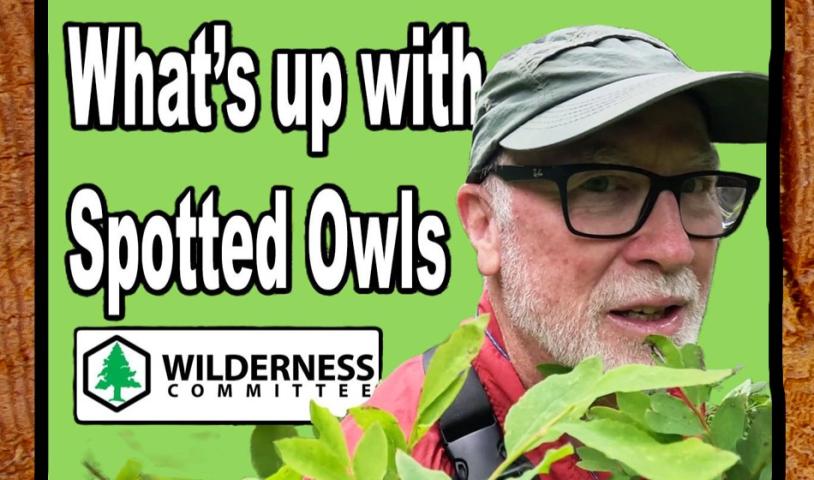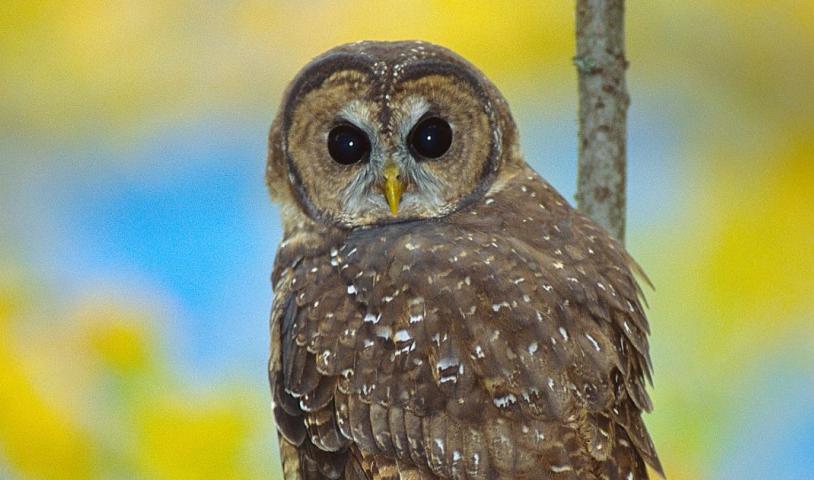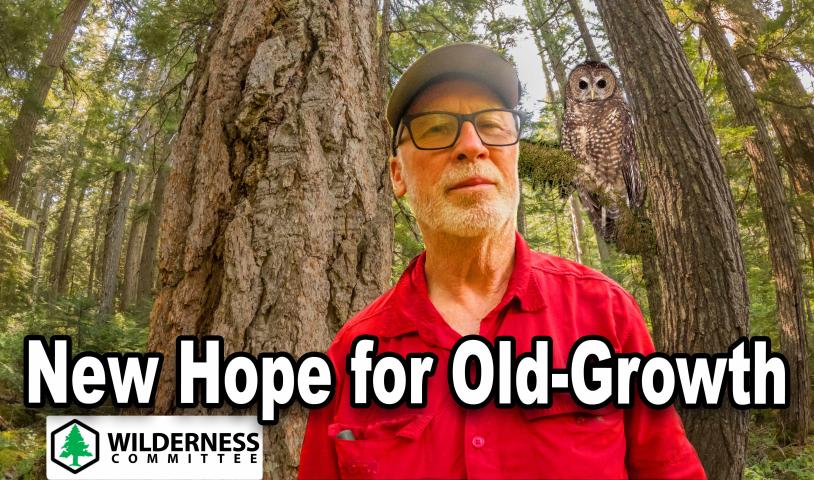B.C. approves 312 new logging clearcuts in habitat of endangered spotted owls
Monday, June 22, 2020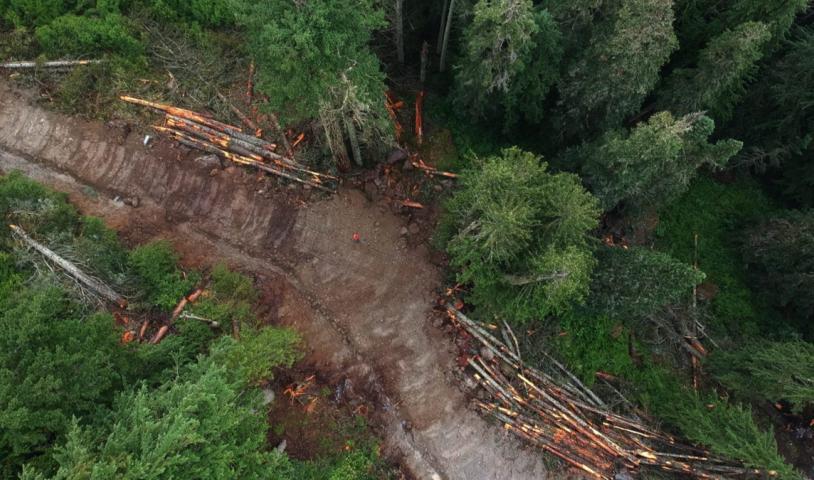
The province has failed to produce the habitat plan for spotted owls it promised 14 years ago, while a costly program to release captive-bred owls into the wild has come to naught
The B.C. forests ministry has approved new clearcut logging in habitat for highly endangered northern spotted owls, including in the Fraser Canyon, where biologists sighted the last three spotted owls known to exist in Canada’s wild.
The ministry issued more than 300 logging approvals — totalling almost 2,000 hectares — in the spotted owl’s range from October 2018 to May 2020, according to recent maps produced by the Wilderness Committee.
The maps show new logging approvals along the southern boundary of Nahatlatch Provincial Park, threatening to fragment one of the largest intact unprotected areas of spotted owl habitat in the province.
Some cut blocks, including in old-growth forest in the Stoyoma Creek watershed near Boston Bar, were auctioned off by the government agency BC Timber Sales, which is responsible for selling provincial logging permits.
“It’s disappointing and it’s frustrating,” wildlife biologist Jared Hobbs told The Narwhal. “It’s counterintuitive to the government’s other purported mandate, which is to conserve species at risk and to recover spotted owls.”
Spotted owls are functionally extinct in B.C.’s wild, largely due to the elimination and fragmentation of their old-growth forest habitat.
Twenty-five spotted owls, including some captured by provincial government biologists, are housed at a one-of-a-kind breeding facility in Langley, where eggs are incubated in a laboratory and forest sounds are played in the background while chicks hatch.
The Northern Spotted Owl Breeding Program is largely funded by the B.C. government but also relies on donations, including through adopt-an-egg and adopt-a-chick programs.
Last year, a record five chicks hatched, while three hatched this year. (You can watch one of this year’s owlets — Chick J, who was returned to the nest of his captive biological parents — on a webcam.)
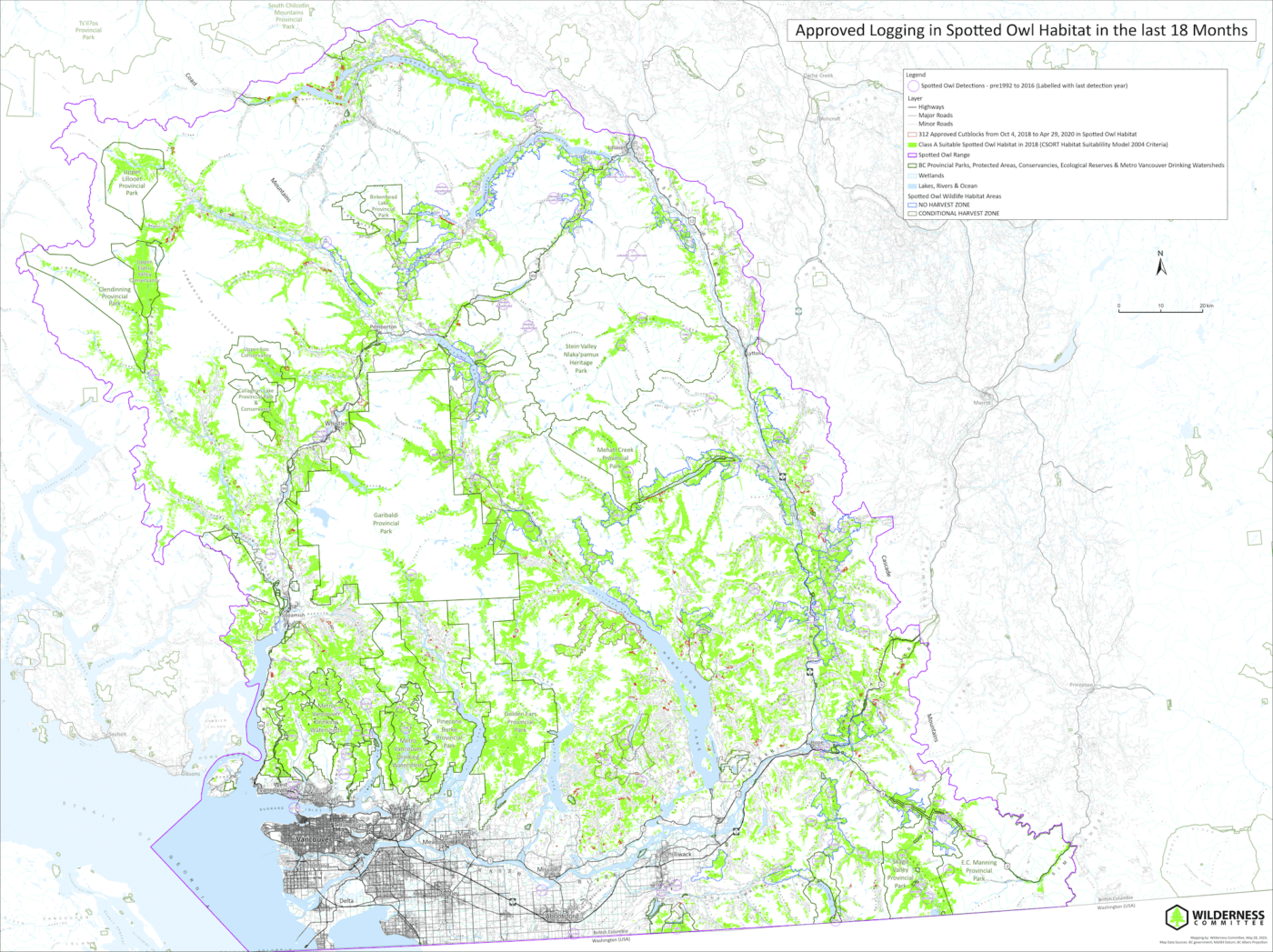
B.C. fails to produce a spotted owl habitat action plan
The spotted owl has been listed as endangered under the federal Species at Risk Act since 2003, requiring Ottawa to take action to recover populations.
A 2006 federal recovery strategy for the spotted owl committed to producing an action plan within a year to identify the raptor’s critical habitat and activities likely to destroy it.
But B.C., which is responsible for developing the habitat action plan, hasn’t produced it.
“It’s really disheartening to know they have the energy and the time budget to go for cutblocks, but they don’t have the energy apparently, and the time budget, to actually work on the habitat piece,” said Hobbs, who was a scientific adviser for B.C.’s spotted owl recovery team from 2002 to 2006.
B.C.’s forests ministry, led by Doug Donaldson, did not respond to questions from The Narwhal over four business days.
In May 2019, environmental law charity Ecojustice, acting for the Wilderness Committee, sent a letter to then-federal environment minister Catherine McKenna calling on Ottawa to take action to protect the spotted owl following decades of “mismanagement” by the B.C. government.
According to Ecojustice lawyer Kegan Pepper-Smith, McKenna said her department would work with the B.C. government to prioritize the completion of an updated recovery document for the spotted owl in the shortest feasible time.
McKenna said the strategy would be produced by summer 2020, Pepper-Smith told The Narwhal.
“Unfortunately, it appears that timeline is no longer on the table.”
Hobbs said the B.C. and federal governments should have the “good sense” not to erode any more spotted owl habitat options while deliberations are underway. Those habitat options, he said, are any mature old-growth forest in spotted owl range, which stretches from northwest of Lillooet to the U.S. border and from Manning Park to the coast.
“We need to treat it for what it is — a diminishing resource that is limited on the landscape. The owls have conveyed that message through their own demise and decline,” said Hobbs, who is also a photographer and author of the book Spotted Owls: Shadows in an Old-Growth Forest.
“Whether you’re logging the last active site or you’re logging the site that was active five years ago, it’s still a site. It’s still spotted owl habitat.”
Joe Foy, the Wilderness Committee’s protected areas campaigner, said B.C. logging has already eliminated much of the spotted owl habitat along the border with the U.S., where northern spotted owls are still found in Washington state.
But habitat remains around Chilliwack Lake, Silverhope Valley and Skagit Valley. “This region along the border is critical for owls to move into B.C. from the U.S.A. protected areas in the south,” said Foy, who last year filmed new clear-cut logging in the Spuzzum Valley, an area in the Fraser Canyon with spotted owl history.
“Logging in the Fraser Canyon habitat is extremely dangerous for spotted owl survival,” Foy said.
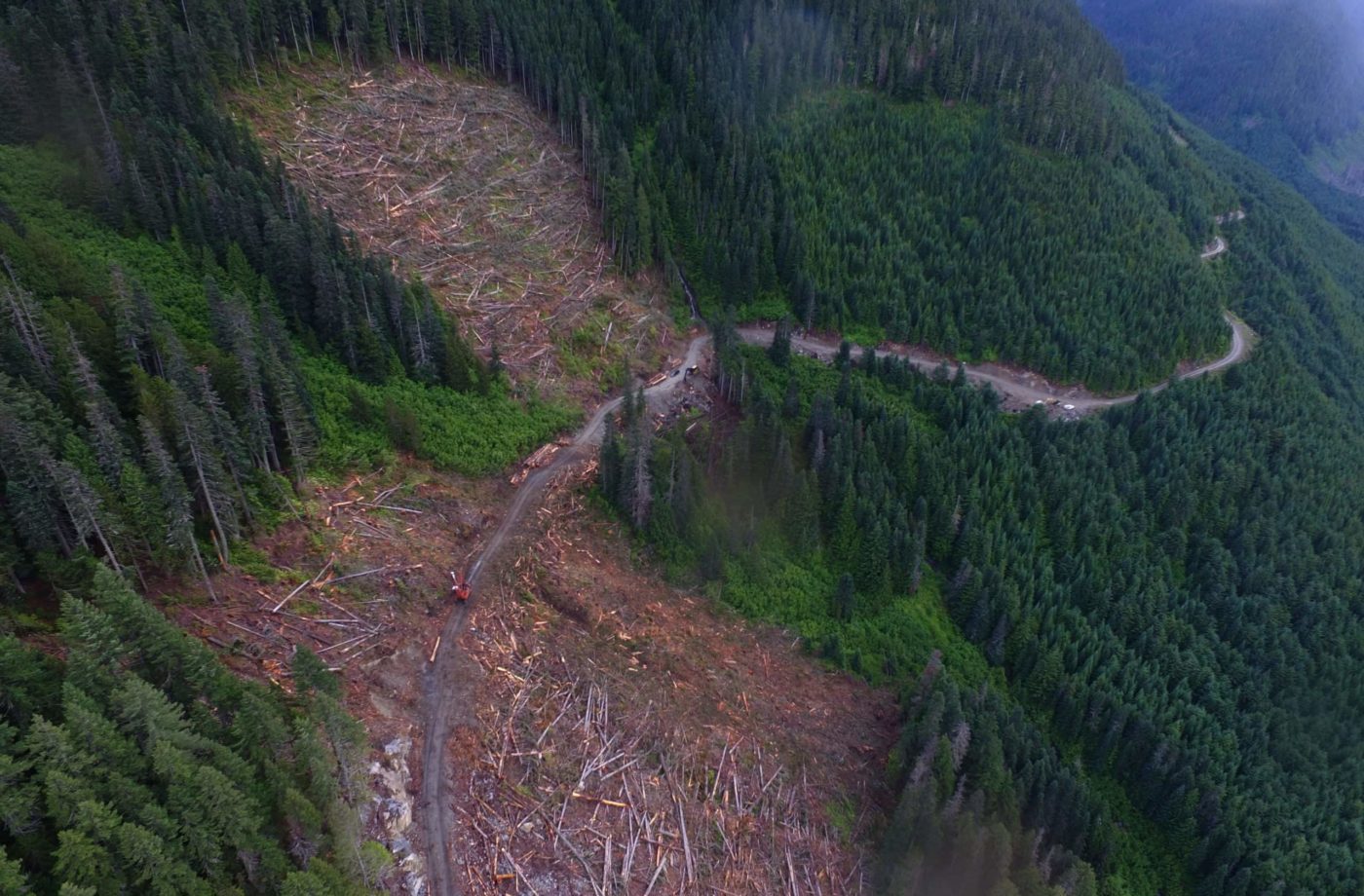
In an emailed statement to The Narwhal, Environment and Climate Change Canada (ECCC) said experts have advised Ottawa that the most limiting factor for spotted owl recovery is competition with, and predation by, barred owls.
“ECCC has no evidence that lack of suitable habitat is limiting recovery … ,” the federal department said.
The department also acknowledged the importance of sufficient suitable habitat, in the right configuration, for the long term recovery of spotted owls, along with the long timeframes required for habitat to become suitable.
The statement said B.C. committed to three key recovery actions for the spotted owl: the protection of 325,000 hectares of habitat, sufficient to support 250 owls; the removal of barred owls from habitats protected for spotted owls; and the establishment of a captive breeding and release program.
“There has been substantive progress against each of these commitments,” the department said.
Barred owls, which don’t depend on old-growth rainforests and can thrive in fragmented habitats, are competing with the spotted owl for habitat, after migrating west of their historic range.
Biologists say a breeding pair of spotted owls can defend their territory from barred owls, but one individual has a tough time and is often pushed out.
Releasing captive-bred owls called ‘wishful thinking’
In a May 14 press release, the Northern Spotted Owl Breeding Program said juveniles would be released into the wild as early as summer 2021, with a goal of releasing up to 20 owls each year for the next 15 to 20 years.
But Foy said the statement is only wishful thinking.
“I’d be a fool if I believed that,” he said in an interview.
In 2006, the B.C. government said it would release 20 captive-bred spotted owls back into the wild annually, Foy noted.
Yet not one has ever been released, while at least 10 spotted owls have been removed from the wild to provide stock for the captive breeding program, he said.
“The breeding centre is well-intentioned and full of hard-working people doing their very best with an extremely endangered species,” Foy said, blaming the provincial government for creating the false impression that reintroduction is imminent.
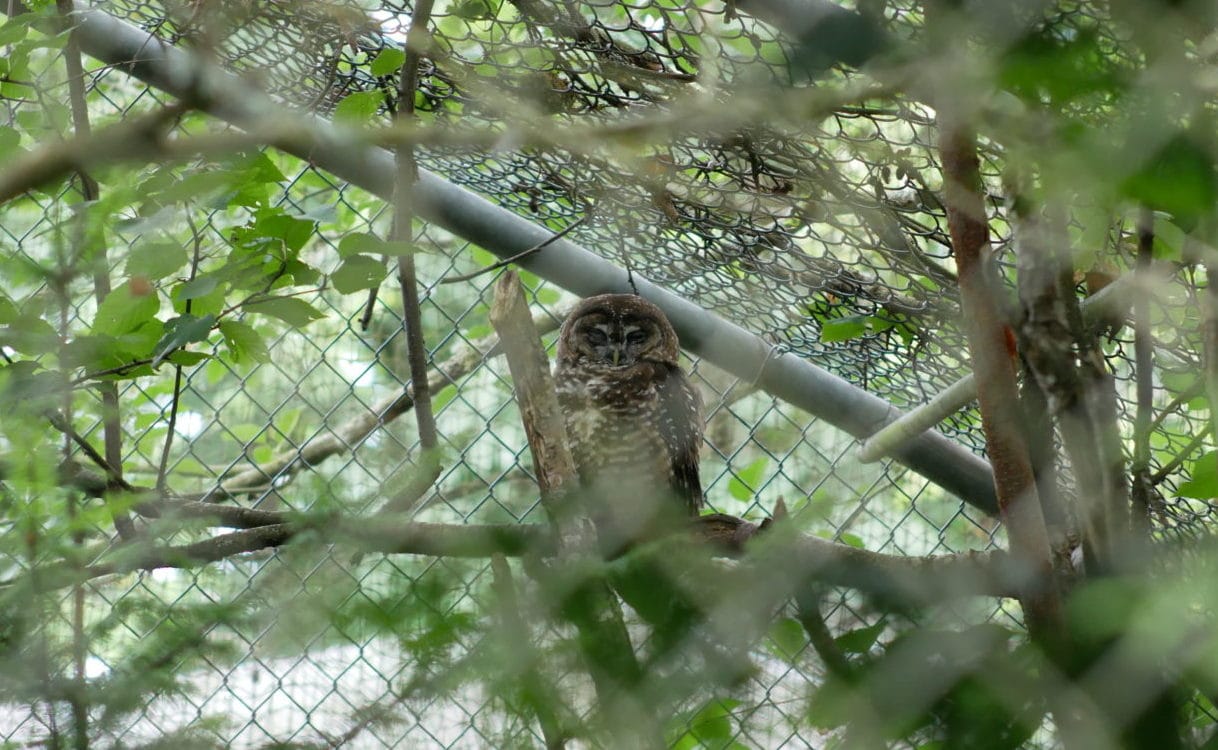
The provincial government is trying to avoid intervention by the federal government, which could issue an emergency order under the Species at Risk Act and take over decision-making about B.C. logging permits, Foy said.
“This is a bit of a dance. The province is responsible for logging. The federal government is responsible for species. The province does not want the feds to take over the forest. And the feds don’t want to get into a giant fight with the province. So the feds bend over backwards, in my view, to believe the province’s promise.”
“Every year, the province says it will be next year, keeping a promise alive by restating it every year,” Foy said. “It’s more than public relations. It’s about the power relationship between provinces and the federal government.”
Foy said reintroducing spotted owls to the wild might work, provided sufficient habitat remains and a bonded adult pair settles in a site.
Adult spotted owl pairs are like “grumpy people that live in the mountains in a cabin with shotguns on their knees,” Foy said. “They will not move. They’re tough.”
But when spotted owl juveniles fledge in fragmented landscapes, they struggle to find mates and flying squirrels and packrats, their primary food. Instead of travelling 10 or 12 kilometres to fledge, as they normally would, they’re forced to fly much farther.
Biologists tracked one juvenile that flew 100 kilometres through a fragmented landscape and then died of starvation, Foy said.
No timeline for a recovery strategy
After receiving the Ecojustice letter, Environment and Climate Change Canada said representatives from the Canadian Wildlife Service met with Ecojustice, Wilderness Committee, Hobbs, U.S. experts and representatives from B.C. to discuss the recovery of the northern spotted owl.
The Canadian Wildlife Service subsequently decided to update the federal recovery strategy for spotted owls rather than to produce an action plan, the statement said, noting the federal government is determining “the best available information to inform the identification of critical habitat.”
Ottawa is also working with the B.C. government to understand the province’s reintroduction planning and the current threat context, particularly with regards to barred owl predation and inter-breeding, Environment and Climate Change Canada said.
The federal government is also gathering information to inform a consultation and engagement strategy with directly affected Indigenous communities and stakeholders.
“With the advent of COVID-19, this work, particularly consultation and engagement, has been delayed,” the statement said.
Foy said the first step is for the B.C. government to map the spotted owl’s habitat and devise a recovery plan to restore habitat so owls “can once again reproduce on their own, without our help.”
“If B.C. stops logging old-growth habitat now, and protects some older second-growth, the forest can begin to heal and actually become healthy enough to be home for a self-sustaining population of owls and neighbouring species, he said.
“And if B.C. won’t act to end the logging of spotted owl habitat, then the government of Canada has a duty to make them do so — without delay.”
Pepper-Smith said Ecojustice and the Wilderness Committee continue to work and meet with federal representatives tasked with drafting the updated recovery strategy but have yet to receive a new timeline.
“While we understand that we are currently living through unprecedented times, both the federal and provincial governments have had decades to produce plans to protect the critically endangered spotted owl,” he said.
The failure to produce a habitat action plan has left the spotted owl and its habitat without the protection mechanisms afforded by the federal Species at Risk Act, Pepper-Smith said, while continued logging has pushed the owl “closer and closer to extinction.”
Click here to view the original article published by The Narwhal.
